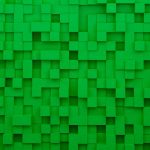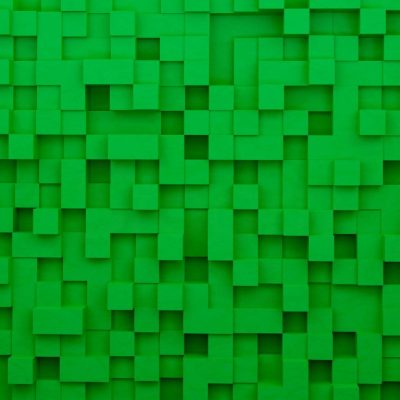If your Minecraft world keeps lagging, freezing, or crashing—especially with mods installed—it’s often because the game doesn’t have enough memory. By default, Minecraft only uses around 2 GB of RAM, which works fine for basic gameplay but not for large builds, shaders, or heavy modpacks.
Let’s go over why adding more RAM helps and how you can do it safely.
Why Give Minecraft More RAM?
RAM (Random Access Memory) is your computer’s short-term workspace. It’s where Minecraft stores temporary data while the game runs.
When there’s not enough RAM, you’ll notice slow chunk loading, stuttering, and sometimes crashes.
Adding more RAM lets Minecraft handle larger worlds, texture packs, and mods more smoothly.
How Much RAM Should You Allocate?
How much RAM you assign depends on your setup and what kind of Minecraft experience you want.
| Setup | Recommended RAM |
|---|---|
| Vanilla Minecraft | 2–4 GB |
| Lightly modded | 4–6 GB |
| Heavy modpacks or shaders | 6–10 GB |
| Large servers / advanced setups | 8–12 GB |
Tip: Never give Minecraft all your system memory. Your operating system and background apps (like Discord or browsers) need RAM too.
As a rule of thumb, leave at least 3–4 GB for other processes.
Check Your Computer’s Available RAM
Before changing anything, find out how much RAM you actually have.
Windows
- Press Ctrl + Shift + Esc to open Task Manager.
- Click the Performance tab.
- Look under Memory — this shows your total installed RAM.
Mac
- Click the Apple logo (top-left).
- Select About This Mac.
- You’ll see your total RAM listed under Memory.
If your computer has 8 GB of RAM, you can safely give Minecraft about 4 GB.
If you have 16 GB or more, 6–8 GB is a good range.
Allocating More RAM (Default Minecraft Launcher)
This method works for Minecraft: Java Edition only.
- Open the Minecraft Launcher.
- Click the Installations tab.
- Hover over your version and click the three dots ( … ), then choose Edit.
- Click More Options.
- In the JVM Arguments box, look for this text:
-Xmx2G
Change the number to how much RAM you want to assign.
For example:-Xmx4G= 4 GB-Xmx6G= 6 GB
- Click Save and launch the game.
Allocating More RAM (CurseForge Launcher)
If you play with mods, you’re probably using CurseForge. It makes changing RAM settings even easier.
Option 1: Change RAM for All Profiles
- Open the CurseForge Launcher.
- Click the gear icon (Settings) in the bottom-left corner.
- Select Minecraft in the sidebar.
- Under Java Settings, drag the Allocated Memory slider to your desired value.
The change is saved automatically.
Option 2: Change RAM for One Modpack
- Go to My Modpacks.
- Click the three dots next to the pack and choose Profile Options.
- Enable Custom RAM Allocation.
- Set the desired memory amount and click Done.
Allocating More RAM on a Server (Advanced)
If you host your own Minecraft server, you can dedicate more memory with a small script.
- Open your Minecraft server folder.
- Create a new text file and paste the following line:
java -Xmx4096M -Xms4096M -jar server.jar nogui
Replace4096Mwith the amount of RAM you want (in megabytes).
Example:3072M= 3 GB. - Save the file as run.bat (Windows).
- Double-click run.bat to launch the server with the new RAM settings.
Tip: Don’t assign more than half your total RAM to the server. Doing so can cause system instability.
GPORTAL Servers (Easiest Option)
If you rent a Minecraft server through GPORTAL, you can change RAM directly from your account dashboard.
Just log in, go to My Server → Edit Gamecloud, and choose a new RAM size like 2 GB, 4 GB, 6 GB, or even 18 GB depending on your modpack.
No manual editing or coding required.
What About Bedrock Edition?
If you play Minecraft: Bedrock Edition (on Windows Store, mobile, or consoles), you can’t manually adjust RAM.
The game automatically manages memory for your system.
To reduce lag in Bedrock:
- Lower your render distance.
- Close unused background apps.
- Avoid massive redstone builds or heavy texture packs.
How to Confirm the Change Worked
After launching Minecraft (Java Edition), press F3 to open the debug screen.
In the top-right, look for something like:
Mem: 1024 / 6144MB
The second number (here 6144MB) shows how much memory Minecraft is allowed to use.
If it matches your change, the update worked.
Common Problems & Fixes
- Game won’t start: You probably gave Minecraft too much memory. Lower the number and try again.
- JVM or Java errors: Update to the latest Java 17 (Minecraft 1.18+ requires it).
- Still lagging: RAM isn’t always the bottleneck. A weak CPU or slow hard drive can also cause performance issues.
- Mod conflicts: Some modpacks need specific RAM settings—check their documentation.
Conclusion
Adding more RAM to Minecraft is one of the simplest ways to boost performance, especially if you play with mods or large builds.
As long as you leave enough memory for your system, the process is safe and reversible.
Once set up, your worlds will load faster, your gameplay will feel smoother, and you’ll spend less time waiting—and more time building.





